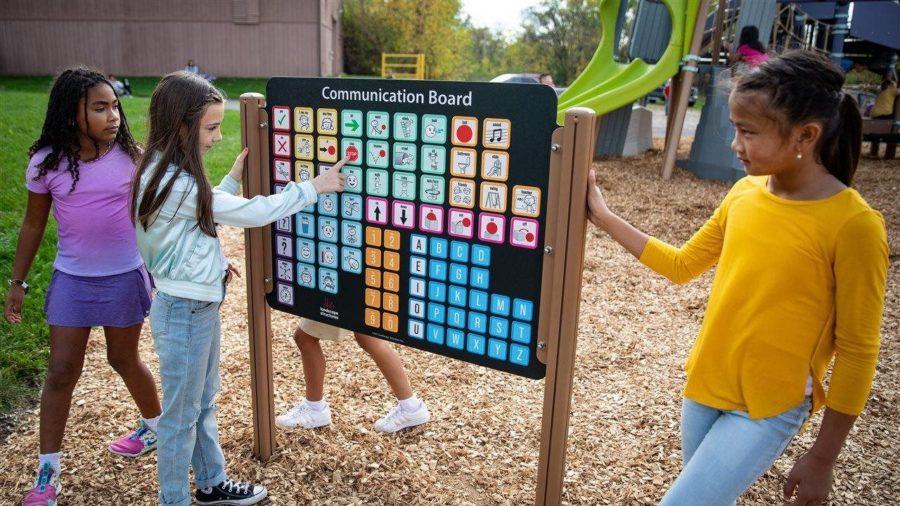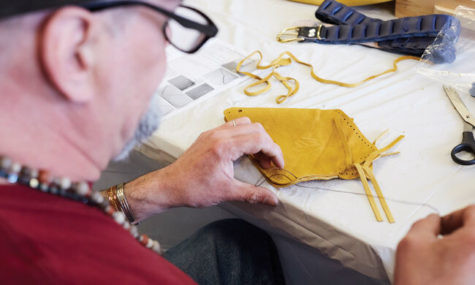How innovative playground design encourages play and communication for children of all abilities
April 4, 2022
(BPT) – Playground design has been evolving to become more inclusive and inviting for all children — as well as caregivers — of differing abilities. But the development of innovative playgrounds created to genuinely benefit everyone requires not only an understanding of the necessary equipment and environmental considerations to allow for the appropriate space and accessibility, but also a deeper knowledge and experience of what children need on all levels: physically, emotionally and cognitively.
The importance of play
Play is so crucial for the development of children that the National Association for the Education of Young Children (NAEYC) considers it to be an important component of developmentally appropriate teaching practice. In addition, the American Academy of Pediatrics issues guidelines to help pediatricians encourage play, and the United Nations High Commission on Human Rights has even declared play to be a fundamental right of all children.
And parents agree. A nationwide parent survey on inclusive play conducted by Landscape Structures Inc. revealed how much perceptions have changed. Nearly three-fourths (74%) of parents today believe it is important that children have the opportunity to play with a variety of children, including those with disabilities.
With this goal in mind, Landscape Structures has drawn on the expertise of child development professionals to continually explore new avenues that allow for all children to fully participate in play together. The work of the company has included not just play structures and activities that are accessible to children with physical disabilities, but also those who may have sight or hearing impairment, intellectual disabilities such as Down syndrome and developmental disabilities like autism.
“We draw from the experience of inclusive play experts as well as partners like the STAR Institute for Sensory Processing, passionate parents, therapists and kids,” said Jill Moore, inclusive play specialist at Landscape Structures. “As a wheelchair user myself, I understand how vital it is for playgrounds to be truly inclusive for all children, as well as for family members and caregivers who also use these crucial spaces for developing children.”
Inclusive playgrounds require features such as:
- Physical play structures where children of differing abilities can challenge themselves, creating a sense of mastery and achievement
- Unitary surfacing amenable to wheelchairs and other mobility devices
- Extra-wide pathways and ramps
- Stimulating activities to engage children on many levels
- Imaginary play areas
- Tactile, visual and auditory stimulation plus calming sensory activities using sand or water, artwork and/or music
- Social activities for several children, plus smaller spaces for just a few
- Quiet spaces for children needing quiet time and limited social interaction
A new frontier in playground innovation: Communication
For children who are unable to communicate verbally, such as early language learners, children with developmental delays, and those who are speech-challenged — or who may speak other languages — their inability to share ideas, feelings and needs can be frustrating and may keep them from socializing with other children.
With this need in mind, Landscape Structures has created a new Symbol Communication Sign to be placed at the entrance to play areas, so every child, family member and caregiver can use them to help further their expression, interaction and communication.
The Symbol Communication Sign is a large board with pictures to represent nouns and pronouns, verbs, feelings, activities, playground events, letters and numbers. The graphics are clear, universally understandable and easy to use, with industry-standard colors representing different types of words. These pictures and symbols help non-verbal, speech-challenged and early-learning individuals communicate with others. Creation of the board’s design was a team effort involving Landscape Structures staff as well as outside experts like speech-language pathologist Karen B. Haines and occupational therapist Ingrid M. Kanics.
“With guidance from experts in Augmentative and Alternative Communication (AAC) and Inclusive Design, we use pictures and symbols as an effective way for non-verbal, speech-challenged and early-learning individuals to communicate with friends and caregivers alike,” said Moore. “This new element helps create a more fully inclusive playground that allows everyone to be able to better communicate with one another, interact with each other and play together.”
In honor of Autism Awareness Month, learn more about the Symbol Communication Sign and other inclusive play possibilities for your community, school or neighborhood at PlayLSI.com.


















































































































































